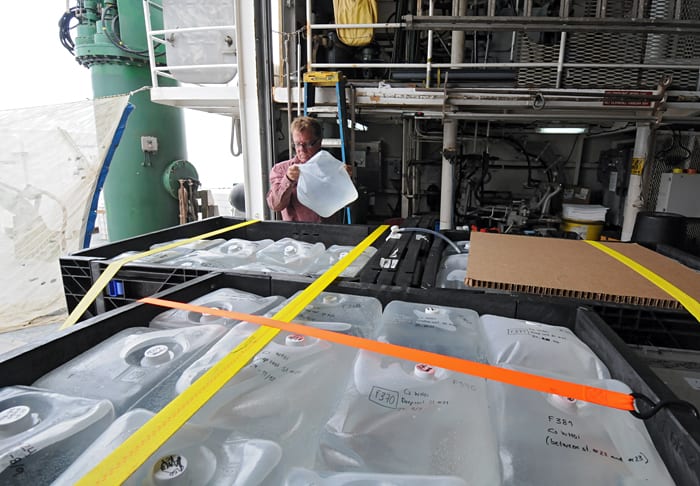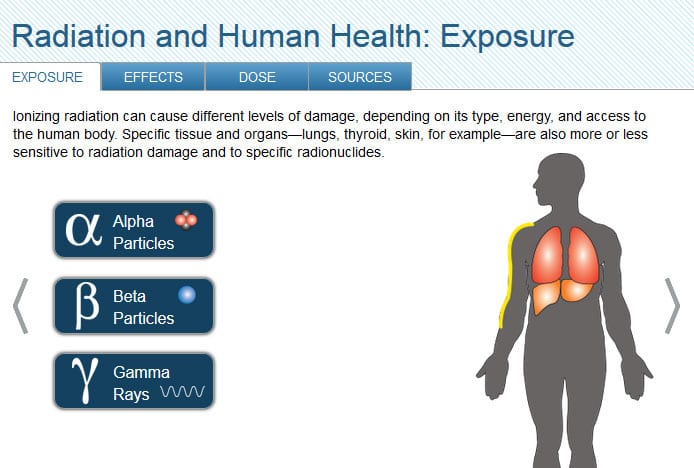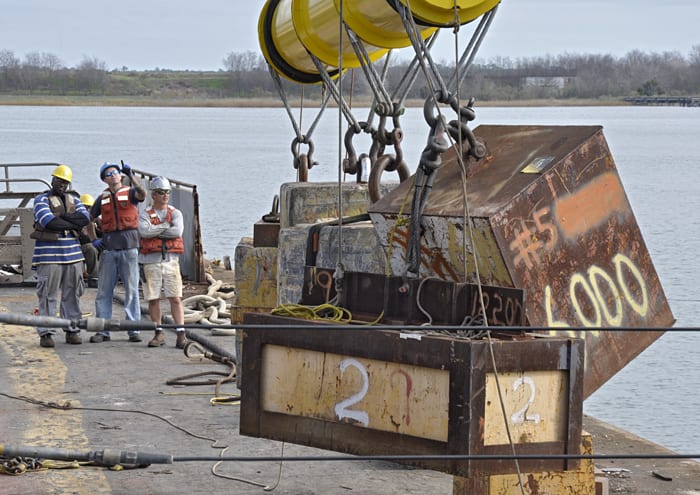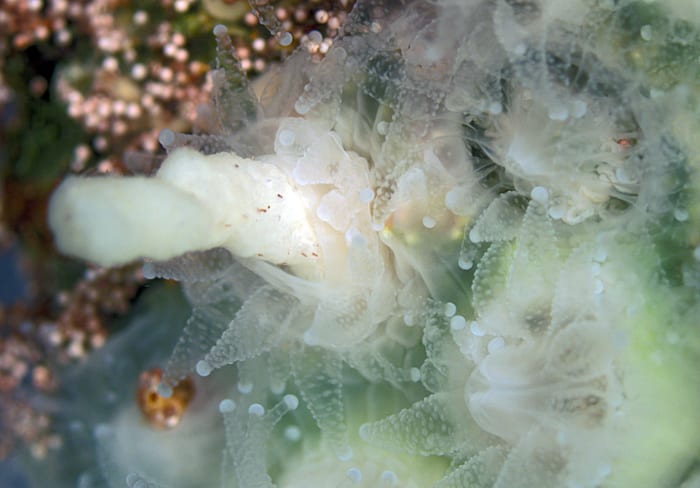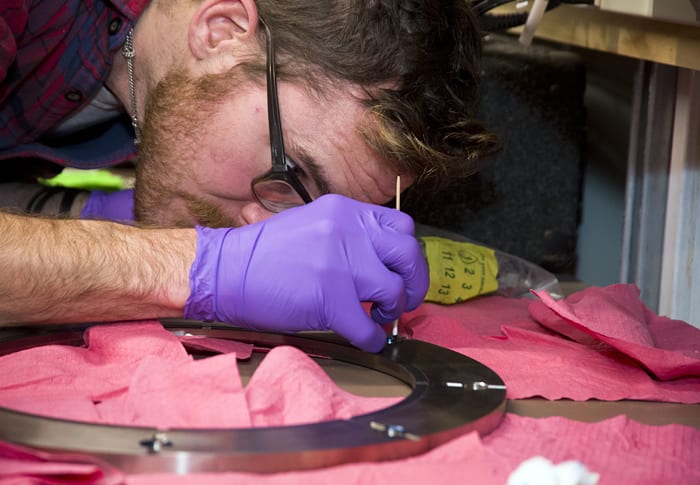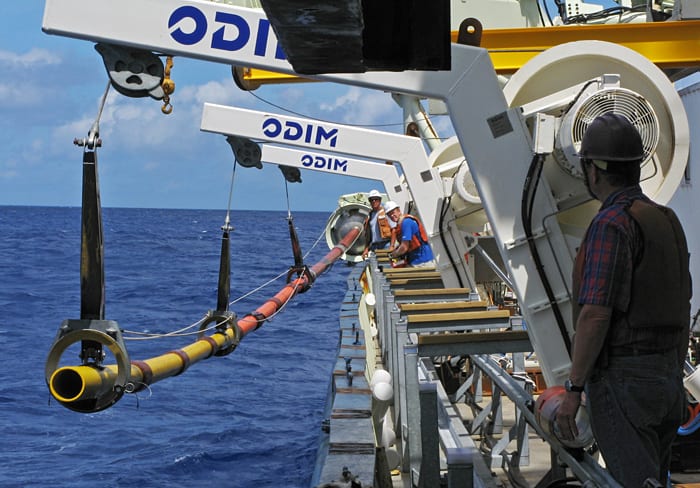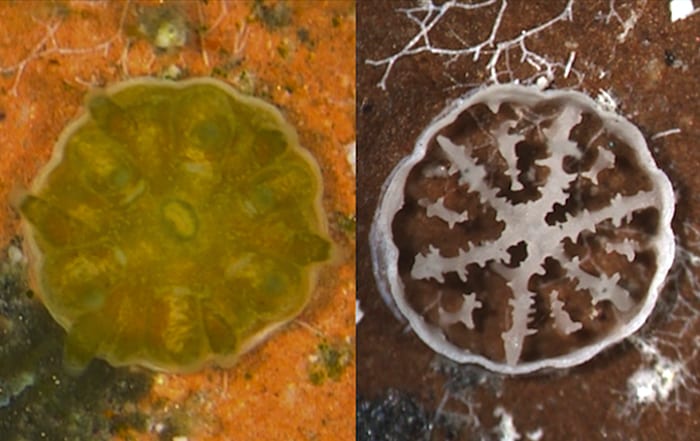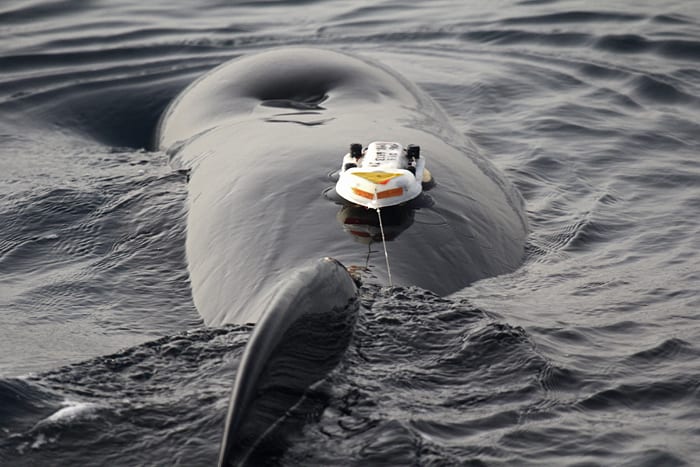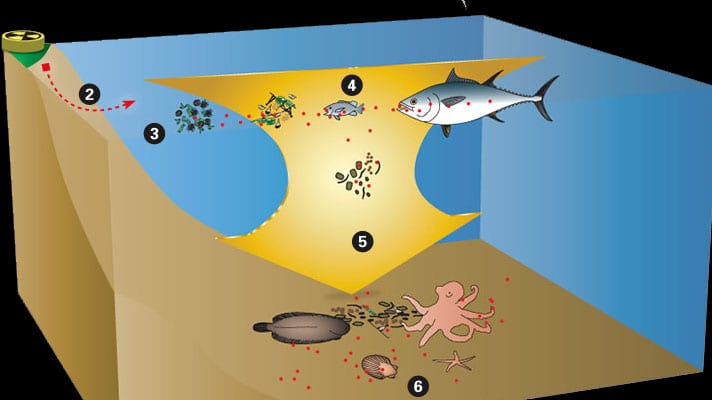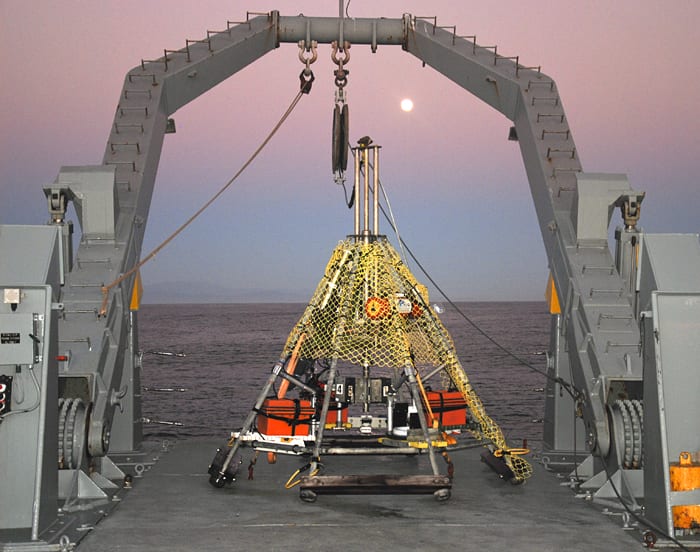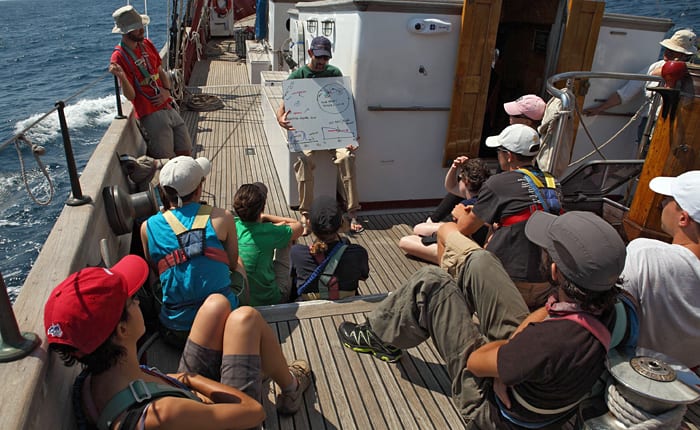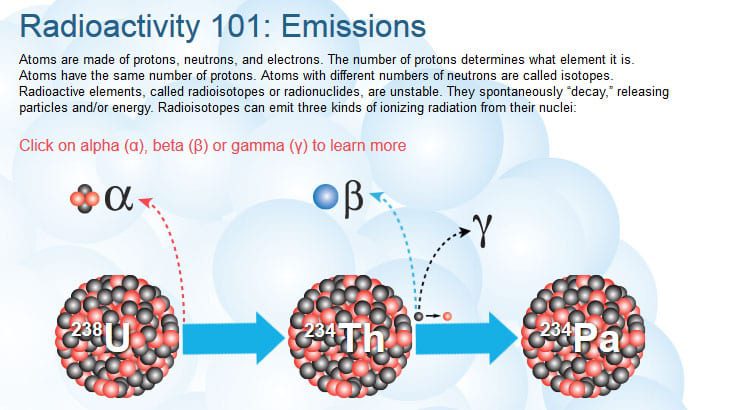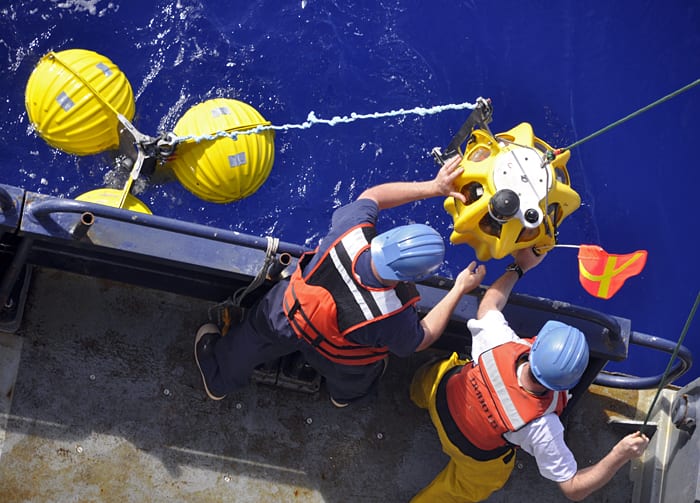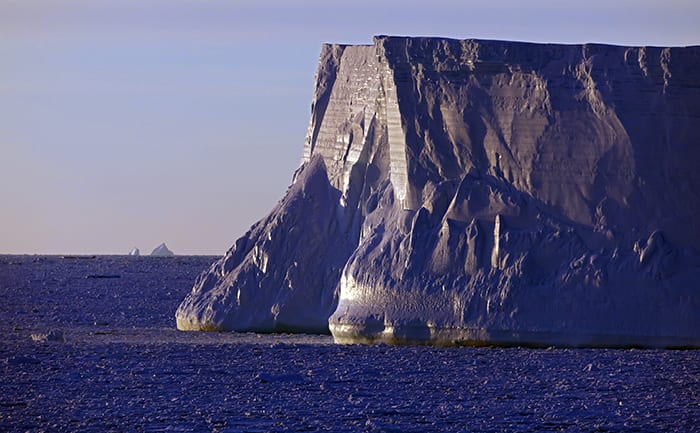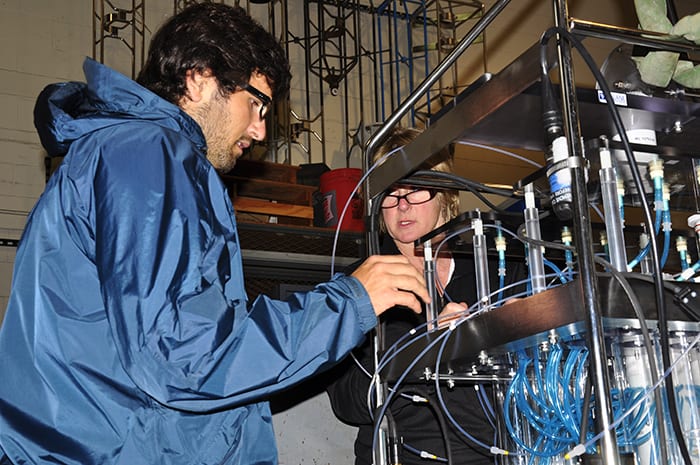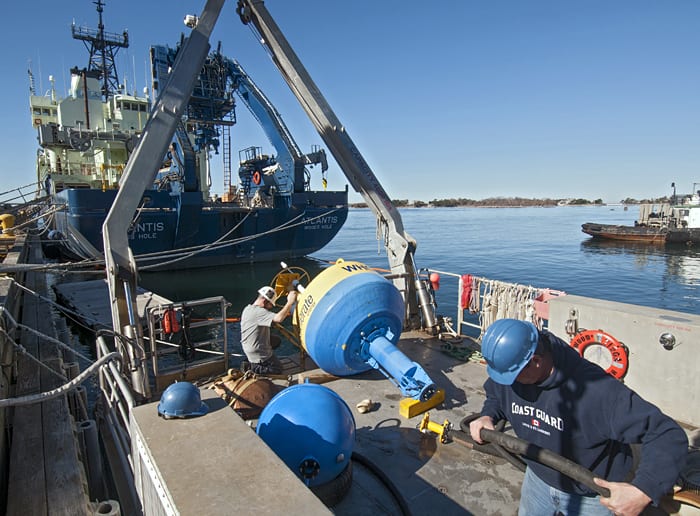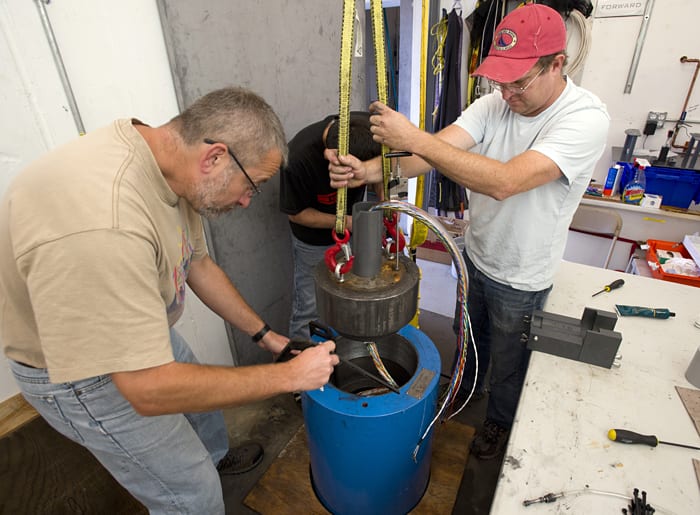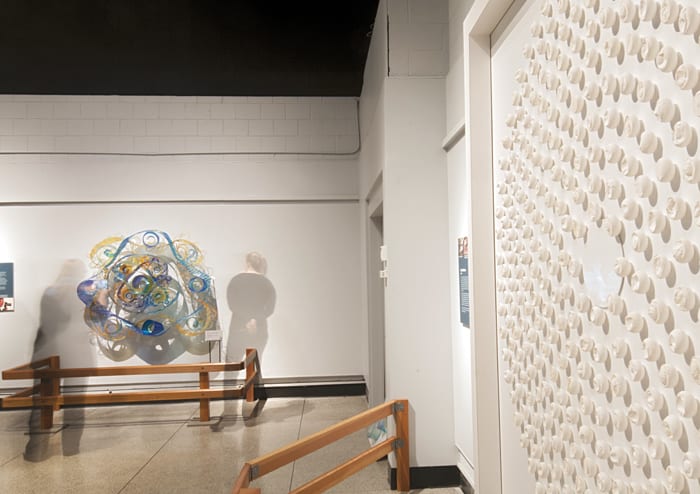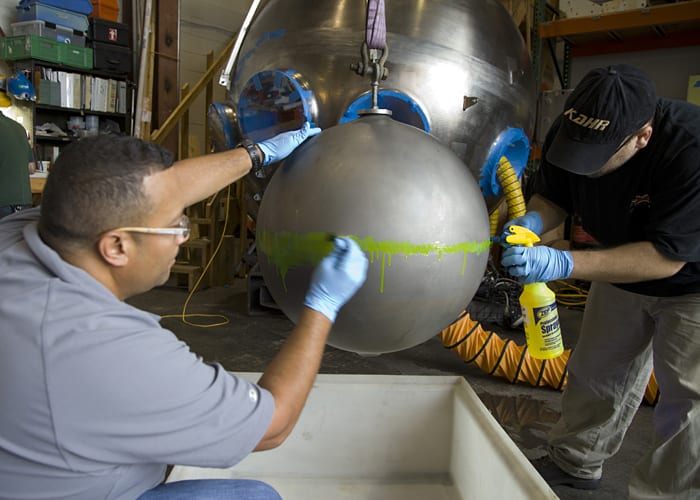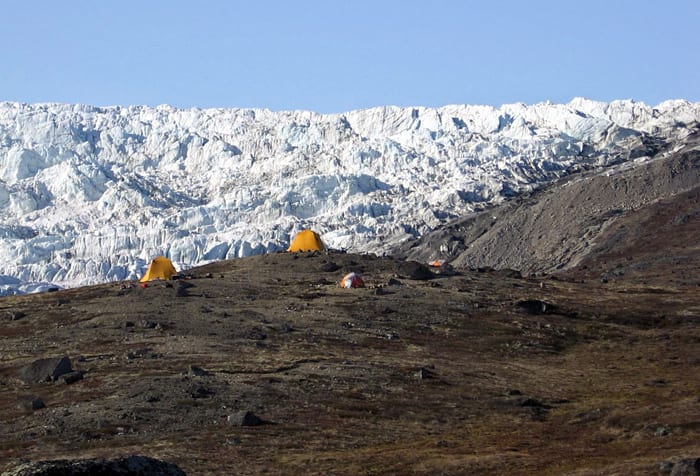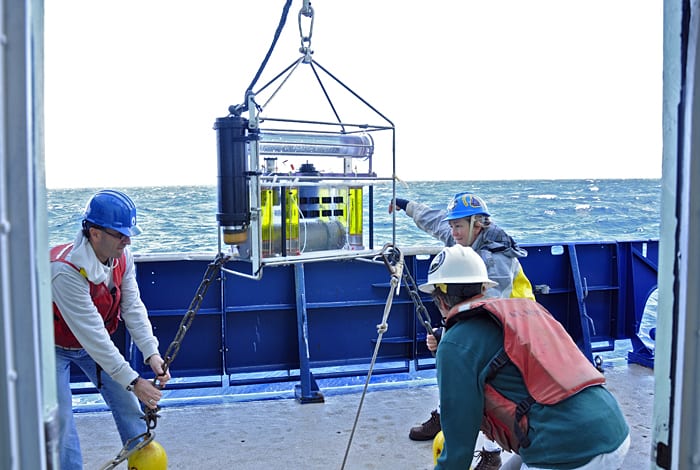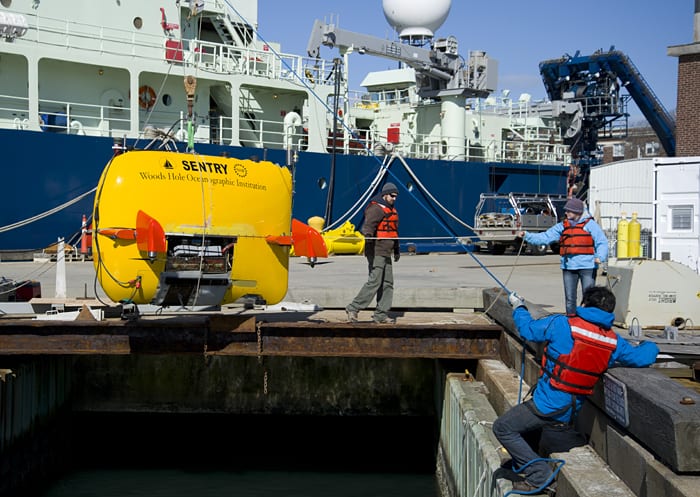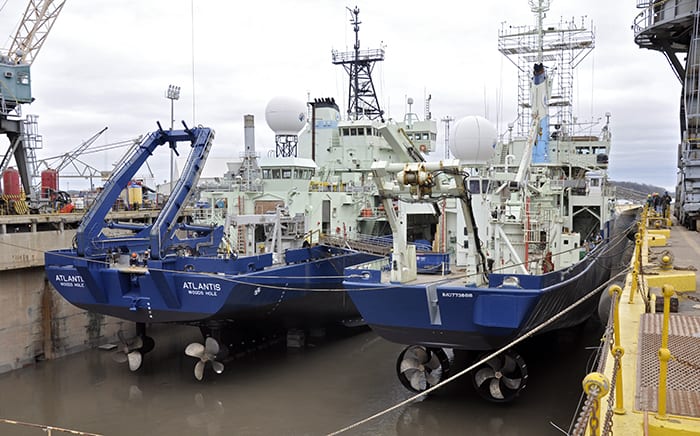Multimedia
Fukushima and the Ocean
WHOI researcher Steve Pike packed some of the 3 metric tons of seawater collected during a 2011 cruise to study the spread, fate, and impacts of radionuclides released from the…
Read MoreRadiation Health Risks
Explore how different types of ionizing radiation—gamma rays, beta particles, and more—interact with the human body, and how damage depends on type, dose, and exposure.
Read MoreHeavy Load
A shipyard rigger (left) joins Ronnie Whims (center) and Patrick Hennessy of the R/V Atlantis to observe a test of the ship’s new A-frame (not visible). Atlantis is the support ship…
Read MoreToo Big for its Stomach?
Liz Drenkard, a student in the MIT-WHOI Joint Program, studies how nutrition affects corals’ responses to ocean acidification. Here, she photographed coral polyps under a microscope, one of them enjoying…
Read MoreA Fine Touch
Technician Jefferson Grau daubs blue dye around the inside of holes on a viewport mounting rim that will be part of the newly rebuilt Alvin submarine. The dye will allow…
Read MoreOne Long Core
Researchers and crew aboard the WHOI research vessel Knorr tested a new long corer system for the first time in 2007. The WHOI long corer, developed by Jim Broda and…
Read MoreAre They What They Eat?
A three-week-old coral polyp (left), and its delicate skeleton (right) help MIT-WHOI Joint Program student Liz Drenkard study the way corals respond to increasing ocean acidification, which can impede their…
Read MoreGot Your Back
A pilot whale sports a temporary electronic tag during a 2012 expedition in the Straight of Gibraltar. MIT-WHOI Joint Program student Nicholas Macfarlane, working with postdoctoral fellow Frants Jensen, placed the…
Read MoreFukushima’s Fallout and Marine Life
Radioisotopes from Fukushima entered the ocean via air and water, moved through marine food webs, and settled in seafloor sediments or reentered the water.
Read MoreSeeing Under the Sea
A pyramid-shaped multicorer sits on the deck of the R/V Melville off Santa Barbara, California in October 2012. Multicorers collect seafloor sediment samples without disrupting the uppermost sediment layers and…
Read MoreWelcome to Life at Sea
Before starting their first year as graduate students in the MIT-WHOI Joint Program in Oceanography/Applied Ocean Science and Engineering, incoming students spend ten days at sea on a sailing vessel…
Read MoreABCs of Radioactivity
Atoms are made of protons, neutrons, and electrons. Radioactive elements, called radioisotopes or radionuclides, are unstable.
Read MoreReeling In
WHOI senior engineering assistant Jim Ryder (left) and senior research assistant Dave Dubois recover an ocean-bottom seismometer onto R/V Marcus Langseth in early 2012. The instrument was part of a…
Read MoreBergs at Dawn
Heading south after a full week spent crossing from Australia to Antarctica, Peter Kimball awoke to the sight of icebergs all around the ship, and took this photo just after…
Read MoreHere Comes SID
Postdoctoral fellow Bill Orsi and microbiologist Ginny Edgcomb assemble the SID-ISMS (Submerged Incubation Device-In Situ Microbial Sampler) in preparation for their cruise to the Mediterranean Sea in late 2010. They…
Read MoreExploring Acidification
Liz Drenkard, an MIT-WHOI Joint Program student assists participants of the Cambridge Science Festival in an activity that illustrates how ocean acidification affects the availability of the molecular “building blocks” corals…
Read MoreSpare Part
R/V Tioga first mate Ian Hanley (left) and senior engineering assistant Jim Dunn prepare a hydrophone buoy for deployment on the stern of Tioga in March. The buoy is part…
Read MoreA Penetrating Task
Research associate Alexi Shalapyonok, mechanic Brian Durante, and engineer Hugh Popenoe prepare to seal a pressure chamber they are using to test a penetrator that will become part of the…
Read MoreArts and Sciences
The Synergy project at the Museum of Science in Boston until June 2 highlights works of art created by artists paired with ocean scientists. Anastasia Azure collaborated with WHOI oceanographer Larry…
Read MoreTank Testing
Doug Mendes (left) and Brian Pepin inspect one of Alvin‘s eight ballast tanks during the continuing overhaul and upgrade of the human-occupied vehicle. They were looking for any signs of…
Read MoreHome in the Cold
WHOI researchers called the edge of a Greenland glacier home for seven weeks during a 2008 expedition funded by the WHOI Arctic Research Initiative. Maya Bhatia and colleagues revealed in Nature…
Read MoreUnderwater Lab
Scientist Konstantinos Kormas from the University of Thessaly, technician Ellen Roosen (foreground), and SSSG tech Allison Heater recover a Deep SID instrument during a Dive & Discover cruise in the…
Read MoreWork in Progress
Sean Kelly (left), Justin Fujii (foreground), and Hannah Baker performed a series of tests with the autonomous underwater vehicle (AUV) Sentry on the WHOI dock in February. Engineers and technicians…
Read MoreClean Sweep
It took about 400 gallons of primer and paint to spiffy up two WHOI-operated research vessels, Atlantis and Knorr, during several weeks of ship maintenance in 2012 in Charleston, South…
Read More
